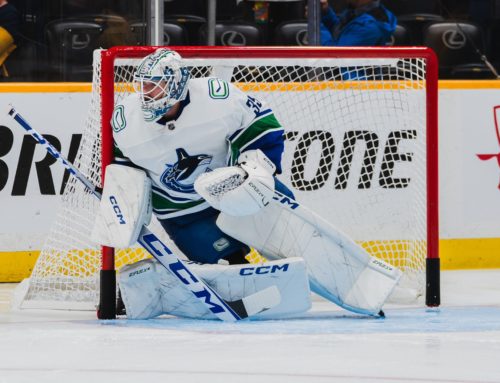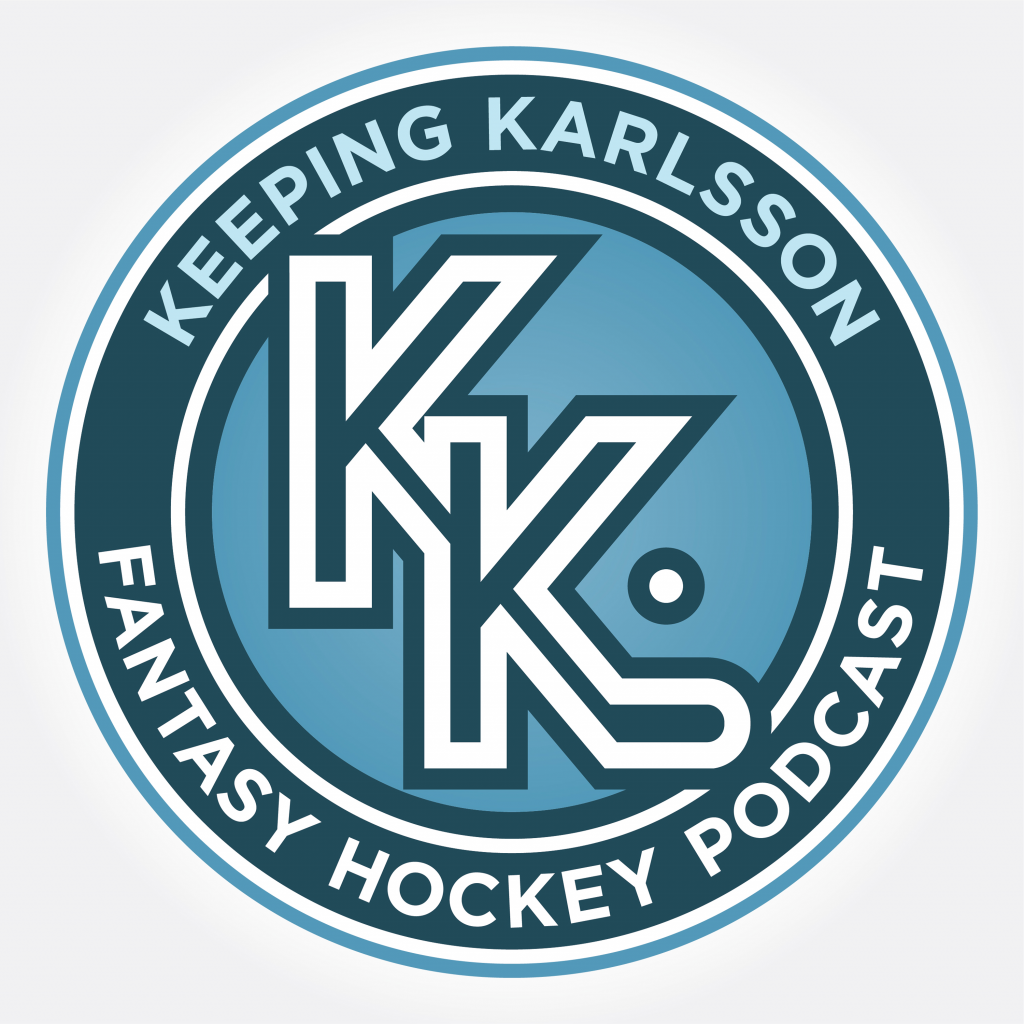It is only a couple of months until training camps finally open, so that means we are full steam ahead in getting ready for the 2025-26 season. Work on the upcoming Dobber Hockey Fantasy Guide is underway and Dobber is hammering away at the projections. The Fantasy Guide will be ready by the end of the month and can be purchased as part of the Keeper League Fantasy Pack! In addition to the fantasy guide, the Keeper Pack includes the 2025 Dobber Prospects Report, which has everything fantasy managers need to know not only about this year's crop of draftees, but each team's prospect pool. Start getting prepared for the upcoming season by picking up the Keeper Pack!
*
The Winnipeg Jets settled with one of the restricted free agents, signing Morgan Barron to a two-year deal:
That brings back another part of the team's effective bottom-6 from last season, and leaves both Dylan Samberg and Gabriel Vilardi left to deal with.
*
One question I get often enough is how I do my projections. The long and short is there are a lot of steps taken, but it's also not as complicated as some people might think. Now that we're in the dead of summer, it is a good time to go through the process of putting together projections. For today's Ramblings, we are going to start at the very beginning, using data from Evolving Hockey.
Plan Accordingly
As someone that often struggles to stay focused on a task, it's hard to stress how important it is to write out a plan. At the very least, write out what you want to accomplish. A few basic questions when it comes to fantasy projections:
- What type of league am I creating projections for? Is the format points-only (goals and assists), rotisserie, multi-category, points (Goals = 5, Assists = 2.5, Shots = 1 etc.), or something else. If you're in a points-only format, it's not worth including blocks, hits, and faceoffs in the data you're working with.
- How big is the league(s) I'm creating these projections? The reason is because the value of the 250th player in a league where 250 players are rostered is not the same as the value of the 250th player in a league where 500 players are rostered.
- What is important to look at in the past when projecting the future?
And the "write out a plan" portion is stressed here. Grab a couple Post-It notes, write out the plan, look it over, adjust what needs to be adjusted, and stick it somewhere nearby. Having that visual reminder of what needs to be done can be a big help.
That last bullet point, about looking at what's important, is the highlight for today. There are a lot of stats available now compared to just five years ago, let alone 10 years ago. Many of them are very useful for a lot of things but not necessarily for fantasy hockey. For example, Adam Lowry, Anthony Cirelli, Brendan Gallagher, and Conor Garland all have top-15 ranks by some play-driving measures among regular forwards over the last four seasons. Those four forwards have zero 30-goal seasons and zero 60-point seasons between them in that span. What makes a player effective in real life can translate to fantasy hockey, but the degree and frequency that occurs is another matter entirely.
Keep It Simple
One of the paradoxes of hockey is this:
- There is a lot of luck involved in hockey, even over a full-season sample. There are studies going back over a decade showing that there is more luck involved in an NHL team's performance than that of teams in soccer, the NBA, and MLB.
- Year-to-year, production among fantasy-relevant players really doesn't change much.
We might think that with so much variance in the game itself, point production would very considerably as well. This is true in specific instances, but on the whole, not really. To illustrate that point, let's look at forwards from each of the last four seasons. What we're going to do is look at the individual 2021-22, 2022-23, 2023-24 seasons, and filter out to just forwards who produced points at a top-line rate in each season; depending on the year, that means between 0.55-0.59 points per game. Then we're looking at what happened, on average, to those players the year after:

Readers will notice that there were production declines the following season each year, but the largest decrease was from 2023-24 to 2024-25. The average dropping from 0.84 points per game to 0.74 points per game between those two campaigns is the difference between a very nice 69-point season and a 61-point season, assuming 82 games played. That means of the top-150-or-so producing forwards in each of the last four years, the average of the largest year-to-year drop was about eight points. That's, like, a good weekend for David Pastrnak.
Once we get down to the individual player level, a lot changes. Players swapping teams, getting older or reaching their primes, returning from injury, and a whole host of other factors could mean big increases or decreases. But, on the whole, not much really changes from one year to the next. So, if a person doesn't have time to make their own fantasy hockey projections, there are many worse ideas than just sorting last year's points/games played list and sitting down at the draft table.
We can just look at points, but different things that matter for different stats. It also helps to separate what might help in one area but hurt in another. To visualize this, we're going to look at the last three seasons only. We will stay with the forwards, group the 2022-23 and 2023-24 seasons together, and then look at what that meant for 2024-25. Here is what we're looking at:
- Production stats in goals, assists, and points per 60 minutes
- Shot stats in attempts (iCF), shots on goal (iSF), and individual expected goals (ixG) per 60 minutes
- The ice-time limits are going to be at least the 25th percentile in each group, so we're not including guys that just played a few games but were mostly AHLers.
The labels on the bottom show us the aggregate of each stat among forwards from 2022-24, and the labels on the left show are those same stats for just 2024-25. The numbers in the boxes are the correlation between them, and the higher the number, the stronger the correlation:

There is a lot of insight we can gain from this one simple matrix.
First, the red rectangle with the blue boxes:

That is the portion dealing with shot attempts and shots on goal. It gives us the strongest correlations in the entire matrix, which makes a lot of sense when we think about players who shoot a lot (or a little) continuing to shoot a lot (or a little). In a full year, Nathan MacKinnon won't crater to 115 shots on goal while Ivan Barbashev won't explode for 320 shots.
The next is the black square which looks at assist rate from 2022-24 and how that explained shot metrics:

Considering we're talking about hockey, correlations between 0.42 and 0.47 isn't that bad, but it is the worst correlation on the board. And that makes sense, right? When talking about offensive players, there aren't many that are genuine dual threats; the tier with guys like Kirill Kaprizov or Nikita Kucherov is a lot smaller than the tier with guys that specialize in either shooting or passing. It is why those types of players are coveted so highly in fantasy drafts and go in the first or second round every year.
That also comes to the forefront when looking at just goals/60 minutes from 2022-24 and what that meant in 2024-25:

Goals from the prior two seasons correlate well with the shot metrics, which makes sense, as well as goals and points, which both make sense. But that correlation is less with the assist rate, so it's not as if assists only don't translate to shooting, but goals don't necessarily translate to assists, either. A forward who shoots and scores at a high rate is very valuable, but that doesn't mean they're going to rack up assists.
I will also mention that the correlations here are relatively high. When doing this through Excel, the correlations were lower, but the proportions remained very similar, so the shot metrics didn't mesh with assists, each shot metric correlated very well with each other, and so on. That is something that is refined further as we start our projections in earnest, but this gives us a good starting point in what we should be looking at for specific fantasy categories. Keep in mind that this is at all strengths, too, so 5-on-5 or even strength data will look different.
This is just the first step, and it's just one set of numbers to look at from one website. We have to consider guys changing teams, the new teammates on a roster, getting a year older, the changing league environment (more/fewer goals, more/fewer power plays, more/fewer shots etc.) and incorporate other stats from other sources, among other things. But we have the framework of what we need to look at for goals, assists, and points among forwards, and that's the first step to building projections.





 FLA
FLA CHI
CHI NYR
NYR PIT
PIT L.A
L.A COL
COL CAR
CAR MIN
MIN STL
STL CBJ
CBJ NSH
NSH DAL
DAL
